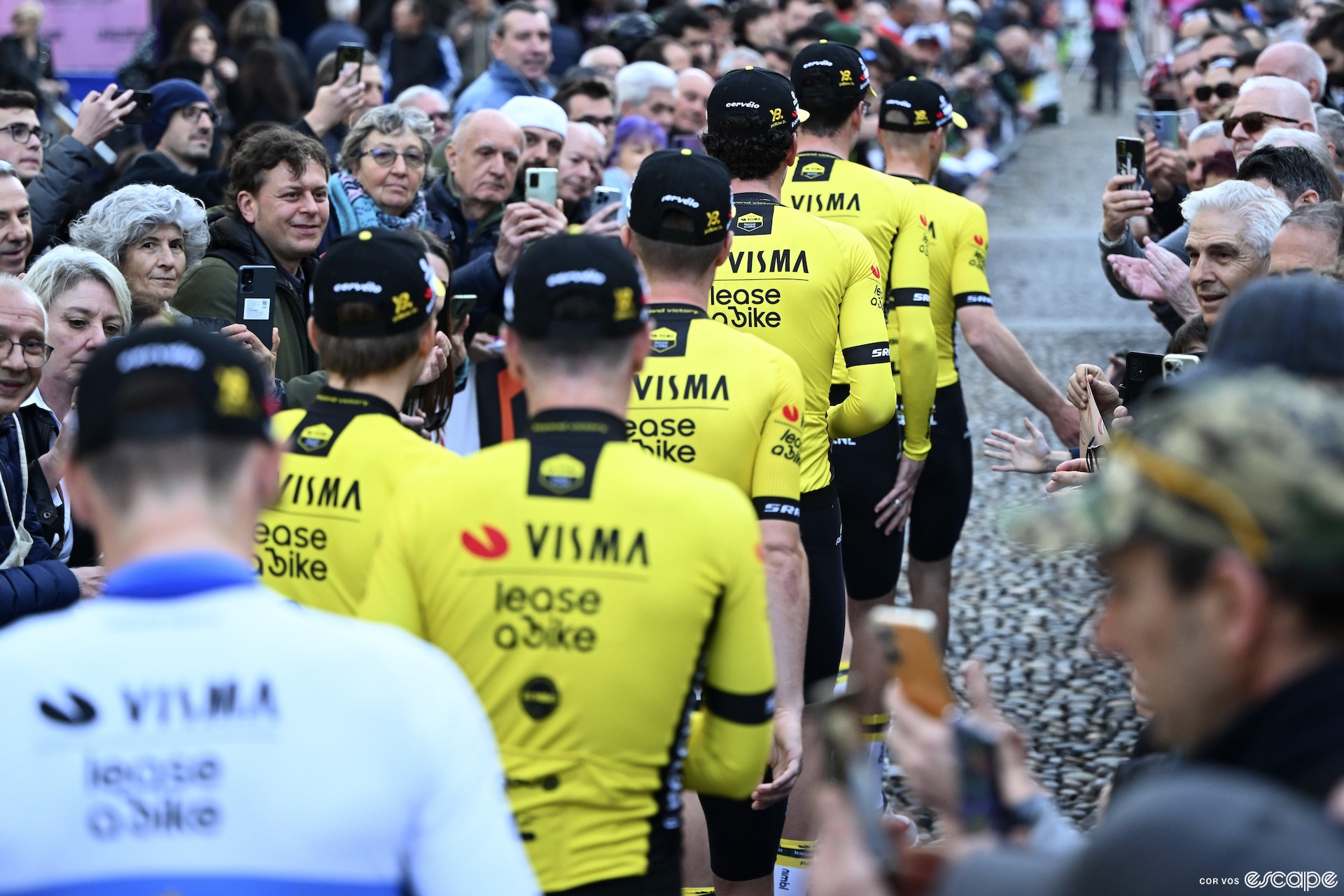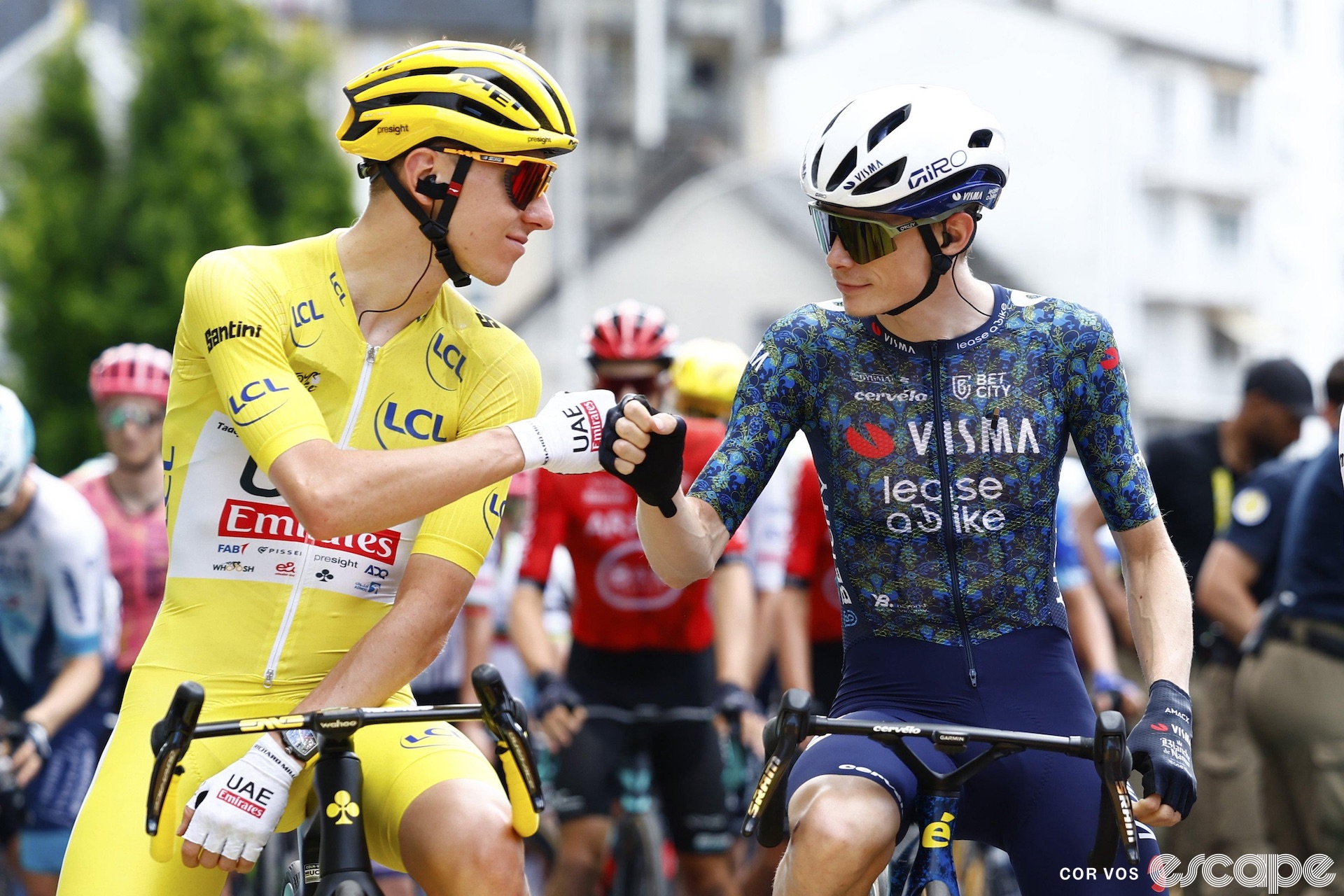As Escape Collective reported on Thursday, the UCI is mulling the idea of introducing a budget cap to professional cycling, employing the services of accounting/consulting giant PwC to study how such a cap might be implemented. While any new rules are still a little ways out and the UCI is still very much in an exploratory phase, implementation by 2026 is a goal.
With that in mind, and on the heels of a few seasons in which a small handful of teams have been particularly dominant, now seems as good a time as any to start pondering a big question: Just what would salary cap-style rules look like in pro cycling?
To answer that question, we should probably take a step back and tackle some more general ones. After all, some cycling fans are probably wondering what budget (or salary) caps even are. Let's dive in.
How do salary caps work in pro sports?
Simply put, some professional sports limit the amount of money that teams can spend. Budgets can be broadly capped or limits can be applied slightly more narrowly to the payroll of a team's athletes, as with a salary cap, a practice that is particularly prominent in American professional sports. Spending can be limited in other ways, too, with some sports opting instead to use less-restrictive tax systems that penalize teams for having payrolls over a certain amount, with the penalty increasing as the spending does.
Those limits can be determined in a variety of ways that are often tied to revenues, and in American sports they tend to be agreed upon by the leagues collectively bargaining with player unions.
The National Football League is a prime example of a relatively straightforward salary cap. All of the NFL's 32 teams must keep their team-wide payroll below a certain amount that fluctuates somewhat each year but generally rises. Teams that violate the cap face extremely stiff penalties that make noncompliance essentially an untenable proposition. Putting together a roster is thus a delicate challenge whereby teams must spend judiciously or simply be unable to bring on certain athletes they might otherwise want to acquire.
At the other end of the budget-limiting spectrum is Major League Baseball, which only imposes a so-called "luxury tax" on its 30 teams. Teams whose payrolls exceed a certain specific amount are taxed a percentage of the overage, with some of the money going to players and some going into MLB's revenue sharing pool. To an extent, big-market teams are generally willing to incur luxury tax penalties; eight teams did so in 2023.
Financial fairness initiatives are far more prevalent in American professional sports but they are starting to emerge elsewhere as well. The English Premier League is trialing a salary cap for the 2025-2026 season with an "anchoring" system to determine the spending limit based directly on the revenues of the smallest teams in the league. Formula One uses a broad budget cap that limits spending on cars and other costs, but it explicitly excludes driver salaries.
How might spending limitations be implemented in cycling?
Based on a PwC presentation to the UCI (a copy of which was obtained by Escape Collective), we already have some idea of what sorts of approaches could be applied to professional cycling. PwC's report highlighted seven different approaches from North American and European sports. Those seven frameworks, which are not all mutually exclusive and could thus be combined in various ways, were evaluated for how well they could be applied to professional cycling.
Three potential approaches to budget limitation (approaches that PwC refers to as "Financial Sustainability Models") were give a green light as being "applicable" to cycling: a budget cap, basing a spending cap on an "anchoring" model, and a luxury tax.
For starters, then, the very basic idea of a cap on budgets was deemed reasonable enough. Determining a cap based on some calculus derived from the finances of the lowest budget teams, a la the previously mentioned "anchoring" system of the EPL, was also deemed a sound possibility. So too was the general idea of a luxury tax, whose benefits include the redistribution of overspending to smaller teams.

Two of the models were given a yellow light as being of "limited applicability": the naming of "Designated Players" and the rollover of "unused cap space" from previous seasons.
The listed Designated Players exemption, as exemplified via the so-called Beckham rule in Major League Soccer, allows for the salaries of a select number of players to be excluded from cap consideration. PwC noted that there would be challenges to this approach in cycling where, at present, rider salaries are not public. The rollover of unused cap space is currently part of the NFL's salary cap system; PwC again highlighted difficulties with administering any potential rules in that framework.
The other three models were deemed "not applicable" for cycling: A soft cap where many exceptions exist for various circumstances, determining caps based on revenue, and limits on the financial losses of teams.
The overly complex nature of a soft cap and its inherently less effective nature as a budget limiter were listed as reasons it would not be applicable. Meanwhile, caps determined specifically by team "revenue" would make little sense in cycling where sponsors generally pay the bills. For similar reasons, a system modeled on rules used by UEFA the Premier League to curb financial losses incurred was deemed inapplicable to cycling.
What could a WorldTour budget cap look like?
All of those evaluations add up to the potential for designing a system with some but not all of the aforementioned aspects. At the moment it seems that the UCI is considering a hybrid system combining a broad cap on budgets with a specific threshold for rider salaries which, if exceeded, could require teams to pay into a shared pool directed towards lower-budget teams.

A (completely hypothetical) example of how such a luxury tax on salaries could work is the implementation of a rule requiring a WorldTour team to pay 20 percent of every dollar spent on rider payroll over a threshold of $30 million into a pot shared by the five teams with the smallest budget. If, for instance, UAE Team Emirates clocked in with a total rider payroll of $40 million, the team would be required to give up $2 million to be split up in some way among smaller outfits at the bottom of the budget spectrum like Cofidis and Arkéa-B&B Hotels.
In broad strokes, it seems relatively straightforward, although as mentioned, cycling has plenty of unique complexities that could make any rules around budget limitations challenging.
For one thing, the North American sports that use salary caps and similar methods so effectively are run by all-powerful closed leagues, which pro road racing is not. Those leagues and the teams within them also bring in huge sums of money. League-wide revenue in Major League Baseball surpassed $11 billion in 2023, while the NFL made more than $20 billion last year. With that amount of cash coming in, it's hardly a surprise that there are numerous individual MLB and NFL players whose annual salaries are significantly higher than any WorldTour team spends on rider payroll.
Leagues with bona fide salary caps also have spending minimums to ensure that there is salary pressure from the opposite direction and not simply a cap on spending by teams, though spending minimums are hardly necessary in most cases in the major American sports as team budgets don't generally fall near them. In cycling, on the other hand, the sponsor-dependent financial structure means at least a few WorldTour teams are always on the brink of collapse every few years, which would make it hard to enforce meaningful spending minimums.
The finances of cycling teams are also unusual in that rider compensation is often paid by sponsors affiliated with the team but not necessarily as a direct part of the team's payroll. How those might be accounted for (literally) in any new budget limitation framework remains unclear. Finally, most sports leagues with financial fairness frameworks exist in one or perhaps two national tax jurisdictions; the 18 teams currently in the WorldTour are registered across 11 different nations. Those clashing tax laws could be mitigated with a collectively bargained, legally binding agreement between teams and the UCI, but there's no guarantee one could be reached.
In any case, none of those challenges seem so hard to overcome as to dissuade the UCI from viewing some kind of cap as a real possibility for 2026, and with only two days of WorldTour racing left in 2024, that's not actually all that far away. Whether all of the sport's stakeholders can be convinced to buy into the plan remains to be seen, of course, and it's unclear what final form the spending limitations could take, but hypotheticals could start to be come realities sooner than later.
Did we do a good job with this story?





